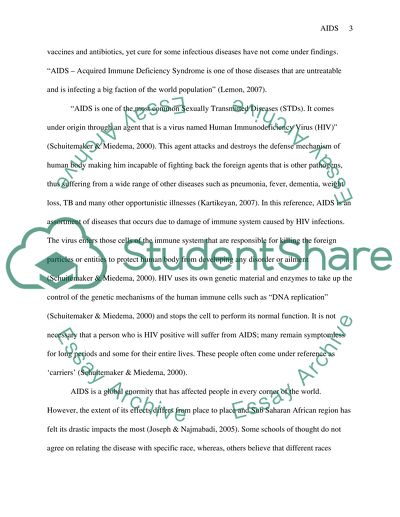Cite this document
(“AIDS Research Paper Example | Topics and Well Written Essays - 1750 words”, n.d.)
Retrieved from https://studentshare.org/health-sciences-medicine/1423978-aids
Retrieved from https://studentshare.org/health-sciences-medicine/1423978-aids
(AIDS Research Paper Example | Topics and Well Written Essays - 1750 Words)
https://studentshare.org/health-sciences-medicine/1423978-aids.
https://studentshare.org/health-sciences-medicine/1423978-aids.
“AIDS Research Paper Example | Topics and Well Written Essays - 1750 Words”, n.d. https://studentshare.org/health-sciences-medicine/1423978-aids.


